Collect. Conserve. Put Rainwater to Work.
Water Collection Systems for Homes & Businesses
Rainwater is a resource worth using. Our water collection systems help you capture and store rain runoff, giving you a reliable way to conserve water, support your landscape, and manage water use more efficiently—all with a system designed for your property.
Reclaim resources. Save water. Cut costs.
The Value of Capturing and Reusing Rainwater
Collecting rainwater gives you a practical way to save resources and cut down on water use around your property. A well-designed system helps you store runoff for future use, making it easier to support your landscaping, lower your water bills, and reduce demand on local water supplies.
Key Benefits of Water Collection
Lowers Water Bills – Using collected rainwater for irrigation and outdoor needs helps you rely less on city water and keep monthly costs down.
Supports Healthier Landscaping – Rainwater is free of the chemicals often found in tap water, giving plants, trees, and gardens a more natural water source.
Reduces Demand on Public Water Systems – Collecting and reusing rainwater helps ease the load on municipal supplies, especially during dry seasons.
Makes Use of Natural Resources – Instead of letting rainwater run off and go to waste, a collection system puts it to work around your property.
Adds Resilience During Dry Spells – Having a stored supply of water can help keep your landscape healthy during periods of drought or watering restrictions.
Promotes Sustainable Property Management – Using rainwater to meet everyday needs is an easy way to make your property more environmentally friendly.
Have a Question?
Finding the Right Water Collection System for Your Property
Collecting rainwater starts with understanding your needs and goals. Whether you’re looking to support gardens, maintain landscaping, or manage a larger commercial property, a well-designed system makes it easier to conserve water and lower your water bills over time.
A professionally installed system ensures every part—from capture to storage to distribution—works together efficiently, safely, and with room to grow as your needs change.
What’s Involved in a Water Collection System
A complete water collection system is made up of five main parts:
- Catchment Area – The surface that collects rainwater, typically your roof.
- Conveyance System – Gutters, downspouts, and piping that channel rainwater toward the storage system.
- First Flush Diverter – A device that removes the initial runoff containing debris and dust before water enters the storage tank, helping maintain cleaner stored water.
- Storage System – Rain barrels, above-ground tanks, or underground cisterns where rainwater is stored until needed.
- Distribution System – A gravity-fed system or pump that moves stored water to gardens, landscapes, or other non-potable uses.
Choosing the right setup depends on the size of your property, how much water you want to store, and what you plan to use it for.
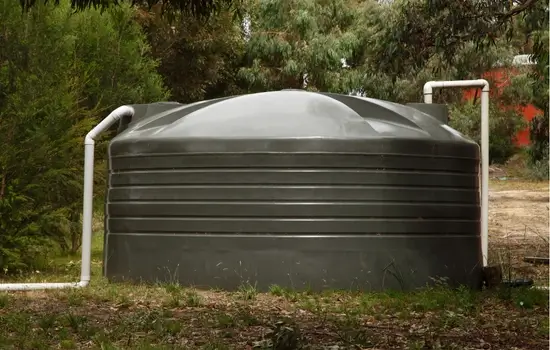
Popular Water Collection Systems for Residential and Commercial Properties
Residential Water Collection Systems
Rain Barrels
Rain barrels are a simple, affordable way to collect rainwater directly from your downspouts. They’re ideal for smaller water needs like garden beds, flower pots, and lawn care. While basic rain barrels are easy to set up, professional installation ensures they’re properly connected to your gutter system, securely placed, and ready to expand if your needs grow. We can also link multiple barrels together or add small pump systems to make watering easier and more efficient.
Above-Ground Storage Tanks
Above-ground tanks are perfect for homeowners who want more water storage capacity. These systems can support irrigation, help fill ponds or water features, and provide extra water during dry spells or watering restrictions. Professional installation ensures the tank is securely placed, properly plumbed, and designed to deliver water efficiently to where you need it most.
Note: Water stored in these systems is typically used for non-potable purposes like irrigation unless additional filtration or treatment is added.
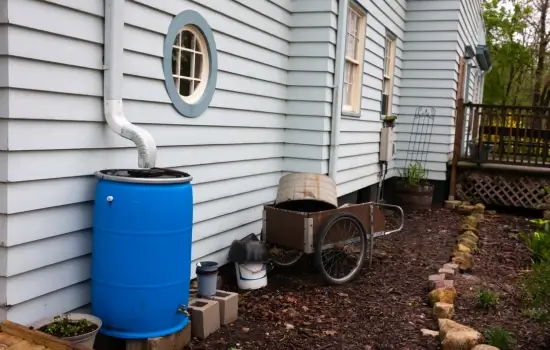
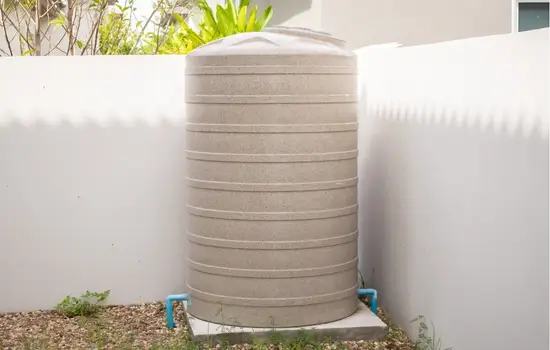
Commercial Water Collection Systems
Large Above-Ground Storage Tanks
For commercial properties, large-capacity above-ground tanks are designed to handle higher water needs. They are ideal for supporting irrigation systems, cooling towers, and property maintenance where water conservation matters on a larger scale. Professional design and installation ensure reliable performance and help maximize the return on your investment.
Underground Cisterns
Underground cisterns store large volumes of rainwater out of sight, keeping the landscape clean and usable. They are a smart solution for businesses that need efficient, high-capacity storage without losing valuable outdoor space. Proper installation ensures the system is set up for long-term performance, easy access, and effective water distribution.
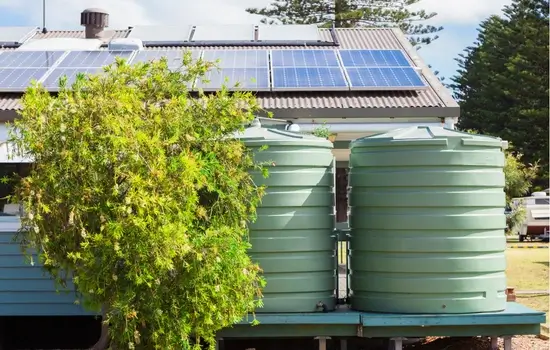
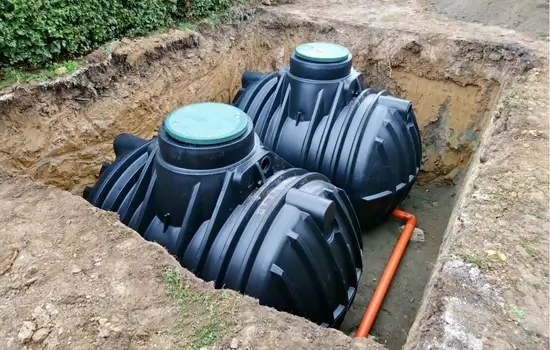
Every property is different. We’ll help you design a water collection system that fits your space, your needs, and your goals—whether it’s for conserving water, supporting your landscape, or planning for future growth.
Make the most of every rainfall
Rainfall to Results: How It Works
Our water collection system process
Simple Steps to Saving Water, Resources, & Money
Step 1
Schedule Appointment
Choose a time that works for you. We’ll set up a visit based on your schedule and answer any initial questions about the process.
Step 2
On-Site Assessment
We’ll walk the property, look at the roof and drainage areas, and listen to how you plan to use the water you collect. We’ll make sure the catchment area and setup can meet your goals before recommending a system.
Step 3
Custom Plan & Quote
After the assessment, we’ll design a system based on your water needs, property layout, and collection goals. You’ll receive a plan and quote that reflect the best way to collect, store, and use rainwater for your property.
Step 4
Installation
We’ll install the system to match your goals, making sure it collects the right amount of rainwater, fits your property, and supports how you plan to use it now and in the future.
Making better use of rain water
Protecting Resources & Reducing Demand
Collecting rainwater turns a wasted resource into a reliable way to support your property. Whether you’re looking to save on utility costs, stay prepared during dry seasons, or make better use of what’s already available, a well-designed system helps you protect your landscape and plan for the future.
Common Problems We Solve
Wasted Rainwater – Valuable rainwater runs off roofs and driveways when it isn’t captured, missing the chance to support landscaping and outdoor needs.
Overreliance on City Water – Depending fully on municipal water drives up costs and leaves properties more vulnerable during dry seasons.
No Backup Water Supply – Having no stored rainwater means fewer options during droughts, watering restrictions, or emergencies.
Increased Vulnerability to Droughts – As droughts become more common, properties that don’t collect rainwater struggle to maintain outdoor spaces and manage water use.
Missed Opportunity to Conserve Resources – Letting rainwater go to waste increases pressure on treated water systems and overlooks a simple way to support conservation efforts.
Designed for Easy Care
Keep Your System Ready
Water collection systems are designed to work with minimal upkeep, giving you a reliable way to store and reuse rainwater without constant attention. A few quick seasonal checks help keep everything working as it should, so you can depend on your system year-round.
Seasonal Inlet Screen Check
Inspect the inlet screens where water enters the system to make sure they’re clear of leaves, sticks, and debris. A quick check in spring and fall helps keep water flowing freely.
Check Lids & Seals
Check that all lids, caps, and seals are tight and in good shape. This helps keep pests out and protects water quality.
Inspect Overflow Outlets
Look at the overflow pipes or outlets after big storms to make sure water is moving away from the system properly and nothing is blocked.
Rinse Tanks/Barrels Annually
Give the inside of your tank or barrel a light rinse once a year to remove any buildup or residue and keep the water clean for outdoor use.
FAQs
Have Questions? We’ve Got Answers
What is a water collection system and how does it work?
A water collection system captures rainwater from your roof and channels it into a storage container like a barrel or tank. It’s usually connected to your gutters and downspouts. The collected water can be used for landscaping, gardening, or other non-drinking purposes. It’s a great way to save on your water bill and make the most of Oklahoma’s rain!
Is rainwater safe to use for my lawn and garden?
Yes, rainwater is perfect for watering your lawn and garden! It’s naturally soft and free of many chemicals found in tap water, making it ideal for plants. While it’s not treated for drinking, it’s a great eco-friendly option for outdoor use.
Do I need to clean or maintain my water collection system?
Regular maintenance keeps your system working properly. We recommend checking it seasonally — especially after heavy storms — to clear out any debris, clean the filters, and make sure everything is flowing as it should. A well-maintained system gives you cleaner water and better performance. Give us a call if you have any questions 405.938.9799.
Will a water collection system affect my gutters?
A water collection system actually works with your gutters, not against them. We carefully design the setup to make sure your gutters continue doing their job while directing rainwater into your collection system safely and efficiently.
How much rainwater can I collect in Oklahoma City or Tulsa?
You might be surprised how much! In Oklahoma City, the average yearly rainfall is around 36 inches, while Tulsa sees closer to 42 inches a year. Just one inch of rain on a 1,000-square-foot roof can collect over 600 gallons of water. With all the rain we get — especially during storm season — it’s a smart way to make the most of it.

Make an appointment
Get a quote today
Call us

